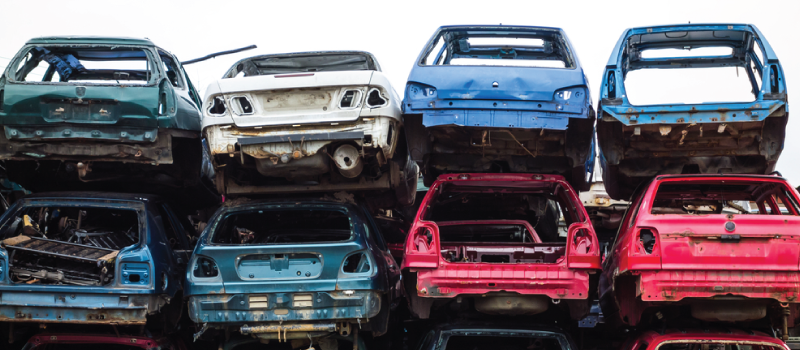
How our scrap yards recycle your car: Depollution
27th Sep, 2018
At Scrap Car Network, we do more than simply scrap your car. We put the focus on recycling as much of it as possible. Over the years our industry has getting more and more environmentally-focused, and ramping up its recycling targets – quite right too!
Current international targets require scrap car people like us to recycle 95% of a car, and at Scrap Car Network we’ve committed to our own target of reaching 100%, using our network of Authorised Treatment Facilities. There are three main stages to totally recycling your car – Depollution, Dismantlement, and Destruction. This post is the first of a three part series in which we’ll be focusing on each one. First up: Depollution!
Why do scrap cars need to be depolluted?
For years, the processing of scrap cars has been governed by the End of Life Vehicles Directive. Basically, it sets targets for reuse, recycling and recovery of End of Life vehicles (scrap cars) and their components. Now, when cars and vans weighing up to 3.5 tonnes are scrapped, they have to be disposed of in an environmentally friendly way, and depollution is a hugely important part of that process.
Here in the UK, these regulations are enforced by the Environment Agency, which requires that all hazardous materials or components are removed from the car as part of the recycling process, both to maximise the efficiency of the process and minimise and potential harm or damage these materials could cause. Windscreen wash, coolants, antifreeze, batteries and oil are all examples of contaminants that can pose a serious threat to human, animal or environmental health.

What do we salvage when we recycle your car?
To be honest, it’s quite a long list! It ranges from liquids and gases that can be harmful when under direct exposure, to valuable parts which can have a tangible resale value, all the way up to components which can even be explosive. In full, this list includes:
- Battery
- Fuel
- Catalytic converter
- Wheels, tyres and lead balance weights
- Liquefied gas tank
- Liquids such as coolant, antifreeze and brake fluid
- Air conditioning gas
- Shock absorber fluid and windscreen wash
- Oil filters and oils – such as those used for the engine, transmission and hydraulics
- Anything with mercury, such as switches
How we depollute your vehicle when recycling your car
We won’t go into exhaustive detail – to give you a quick idea, though, there are a couple of tried-and-tested techniques we use to make everything safe when we depollute your car. This includes draining the vehicle’s fluids using filtration, distillation and reverse osmosis. Then, the vehicle’s chambers are flushed through to ensure that no residue remains in the car at all.
Potentially explosive materials, such as airbags and seatbelt pre-tensioners are either carefully removed, or set off in situ (which is the recommended option). Meanwhile, components like car batteries will be removed and sold as spares, or disassembled into their component parts. Once the Authorised Treatment Facility has fully depolluted the car, it’s then ready to be further dismantled. That’s what we’ll be covering in our next post on the topic!
Until then, if you’re thinking about recycling your own car, we’ve got good news for you – you’re in exactly the right place! Just head on over to our homepage and enter in your car reg and postcode, and we’ll provide you with a free, instant online quote for your scrap car. It couldn’t be easier!